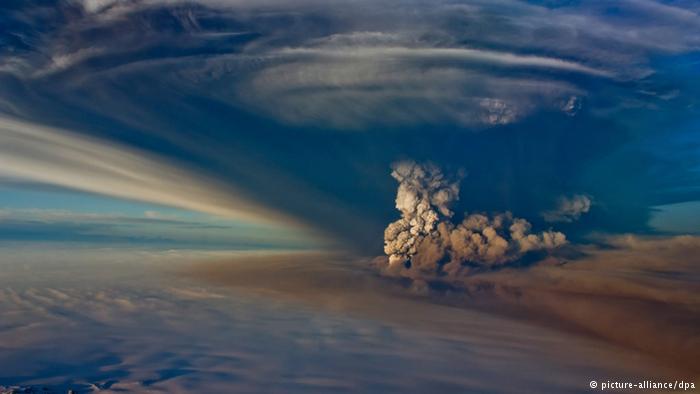Iceland eruption near volcano triggers red alert
BBC
Bardarbunga is part of a large volcano system hidden beneath the Vatnajokull ice cap in central Iceland
The Icelandic Met Office has raised its aviation warning level near the Bardarbunga volcano to red after an eruption began overnight.
Scientists said a fissure eruption 1km (0.6 miles) long started in a lava field north of the Vatnajokull glacier.
Civil protection officials said Icelandic Air Traffic Control had closed the airspace above the eruption up to a height of 5,000ft (1,500m).
The volcano has been hit by several recent tremors.
The fissure eruption took place between Dyngjujokull Glacier and the Askja caldera, a statement from the Department of Civil Protection said.
“Scientists who have been at work close to the eruption monitor the event at a safe distance,” the statement added.
It said that no volcanic ash had so far been detected but a coast guard aircraft was due to take off later to survey the site.
Until now the Icelandic Met Office has kept its aviation warning level – indicating the potential threat of volcanic activity to air travel – at orange, its second-highest.
No ash has been detected in the eruption but white steam (pictured) has been issuing from the volcano
The eruption of another volcano in 2010 caused the largest closure of European airspace since World War Two
The Bardarbunga volcano, the peak near the top left, is covered by the large Vatnajokull glacier
On Friday morning, the UK Met Office advised that the Bardarbunga eruption was a lava blast, with no ash being emitted into the atmosphere.
Noting current wind patterns, it added that even if ash were emitted it would be unlikely to affect UK airspace for the next couple of days. However, it was monitoring the situation and liaising with airlines and airports.
Bjorn Oddsson, a geophysicist from Iceland’s Department of Civil Protection and Emergency Management, said the eruption was currently not affecting air travel.
“It’s mostly effusive; there’s no ash in the air, and not even in the vicinity,” he said.
“So mostly lava is pouring out of the craters right now and the only flight restriction is over the area. All airports are open, and things are quite in control.”
The magnitude of the Bardarbunga volcano under the ice was not discovered until it was seen by satellite in 1973
Analysis by BBC science correspondent Rebecca Morelle
Scientists around the world have been watching Bardarbunga to see what would happen. After swarms of intensifying earthquakes – caused by molten rock moving beneath the ground – an eruption has finally begun.
Initial fears that this might trigger a scenario just like the 2010 Eyjafjallajokull volcano have been put aside – at least for now. The worry was that the magma might erupt beneath a thick ice glacier, triggering an explosive ash cloud. Instead, the molten rock has moved north, where the ice is less thick, and we have a fissure eruption, emanating from a 1km-long crack in the ground.
At the moment, scientists say it’s not explosive, instead a mixture of lava and steam is slowly coming out of the vent. Only small spurts of ash have been spotted and they are not jetting up into the sorts of altitudes that would cause disruption to flights. There are still concerns about flooding – the water level in one lake is thought to have risen by 5-10m in the past few days.
This could be a repeat of Iceland’s “Krafla fires”, which for 10 years produced spectacular fountains of lava that were more of a tourist attraction than a threat. However, there is also a chance the magma could start to move towards another large volcano called Askja, where it could trigger a much larger blast.
Cauldrons
On Thursday, scientists said they were examining several “cauldrons” found near Bardarbunga volcano that could potentially be a sign of an eruption.
The cauldrons, depressions in the volcano’s surface, each between 10-15m (49ft) deep and 1km (0.6 miles) wide, were seen during a flight on Wednesday.
Bardarbunga is part of a large volcano system hidden beneath the 500m-thick (1,600ft) Vatnajokull ice cap in central Iceland.
Iceland’s Eyjafjallajokull volcano erupted in 2010, producing ash that disrupted air travel across Europe.
